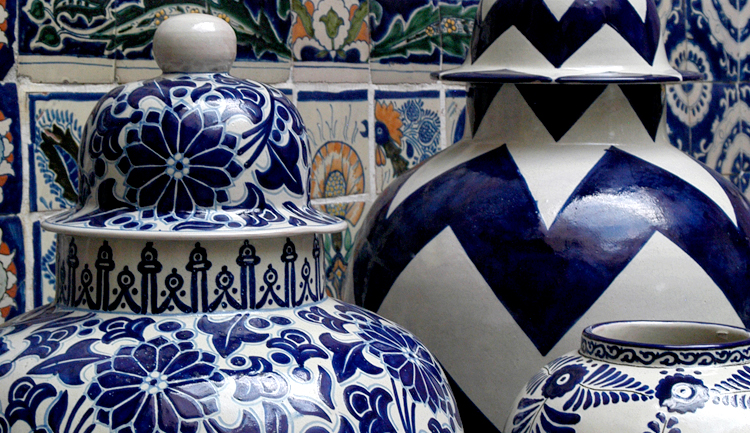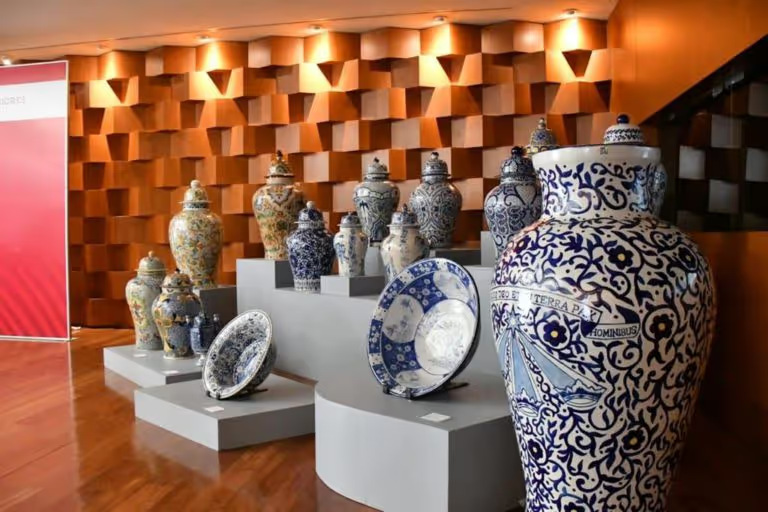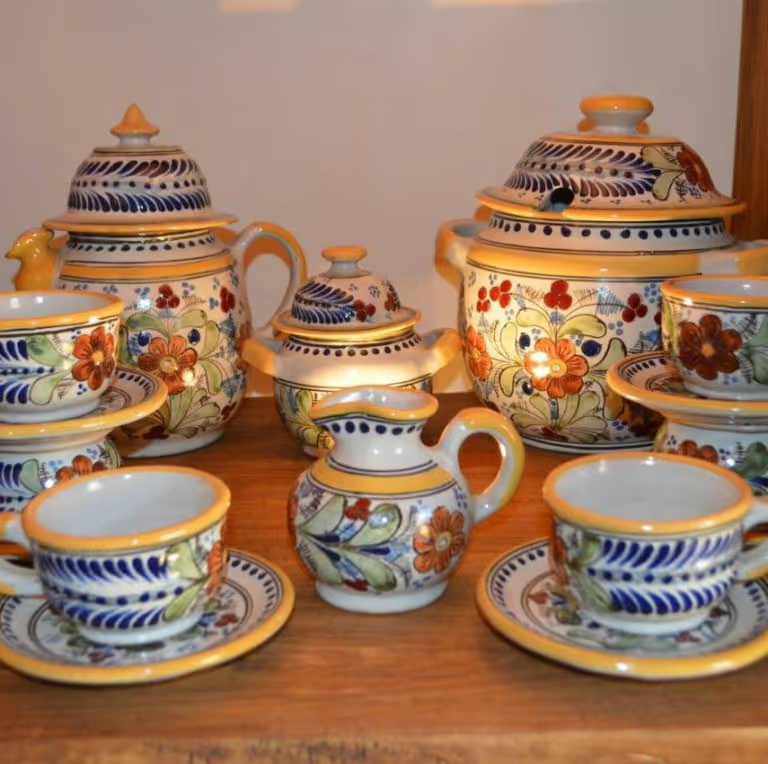Talavera : simplement une œuvre d'art




Fait sur mesure pour vous.
Aujourd’hui, nous visitons le magnifique état de Puebla, qui se situe dans le centre du Mexique. Bien qu’il ne possède pas de plage, il compte neuf villes magiques. Grâce à sa gastronomie, nous pouvons déguster les chiles en nogada tout au long du mois de septembre, en particulier lors de la Fête de l’Indépendance. Outre sa renommée culinaire, Puebla se distingue également par la production de sa Talavera. La Talavera de Puebla est l’un des artisanats les plus emblématiques du pays. La Talavera, l’un des artisanats mexicains les plus emblématiques.
Les caractéristiques de cet artisanat sont, premièrement, que la Talavera est résistante aux chocs et aux hautes températures. Deuxièmement, c’est l’un des artisanats les plus délicats et distingués du pays. Troisièmement, son principal composant est la faïence, une terre cuite commune avec un glaçage métallique provenant de Puebla et de Tlaxcala.

Puebla est l’endroit où la véritable Talavera est toujours disponible. En 1995, son appellation d’origine était Talavera de Puebla, mais depuis 1997, elle est simplement appelée Talavera. En 2019, l’UNESCO a déclaré la fabrication artisanale de la Talavera comme un Patrimoine culturel immatériel de l’humanité.
Comment est-elle arrivée au Mexique ?
Selon l’Institut d’Anthropologie et d’Histoire, la Talavera est arrivée au Mexique en 1550, grâce à des artisans de Talavera de la Reina, en Espagne, qui se sont installés à Puebla. Là, ils ont mêlé leurs techniques à l’utilisation de l’argile des peuples indigènes, créant un produit totalement original.
Le XVIIIe siècle fut son âge d’or. Chaque famille de la haute société aspirait à posséder de la vaisselle fabriquée dans ce matériau. En conséquence, il y a eu des expositions de Talavera à Mexico et même à New York.

Son processus de création
Son élaboration n’a pas beaucoup changé depuis la période coloniale. Tout d’abord, les artisans mélangent de l’argile blanche et de l’argile noire et la pétrissent. Ensuite, ils moulent ce mélange. Enfin, les artisans laissent sécher les pièces plusieurs jours dans des espaces non ventilés, à la main ou en mûrissant.
Les pièces sont ensuite placées au four où elles deviennent des « jahuete », ce qui signifie biscuit cuit. Après cela, elles sont poncées, vernies et décorées. Les couleurs utilisées sont le bleu, le jaune, le noir, le vert, l’orange et le mauve. Enfin, elles sont recuites, et voilà.

L’utilisation de la Talavera
Principalement, ce sont des ustensiles du quotidien comme les outils de cuisine, les vases, les pots de fleurs et les jarres qui sont fabriqués avec de la Talavera. On peut aussi la trouver sous forme de figurines décoratives ou d’articles religieux. En général, les objets en ce matériau sont très prisés car ils se distinguent par leur élégance.
La Talavera est également un élément décoratif à l’intérieur comme à l’extérieur des maisons. Dans l’intérieur des habitations, on peut voir des éviers et des bassins faits dans ce matériau. Les carreaux de Talavera sont un élément qui valorise la beauté des façades des bâtiments, des églises et des cuisines à Puebla.

La création d’objets en Talavera est un art à Puebla. Cependant, seules quelques ateliers subsistent encore. Sa beauté est unique et incomparable. L’un de ces objets représente un souvenir parfait d’un voyage à Puebla.
***
Si vous avez aimé cet article, nous vous recommandons :
voyage






